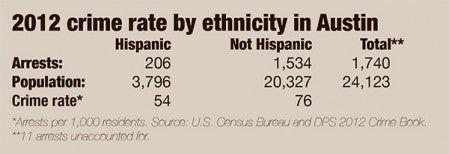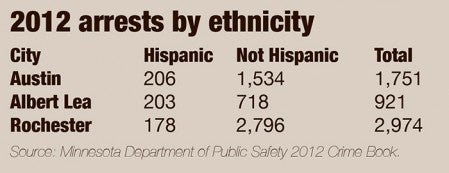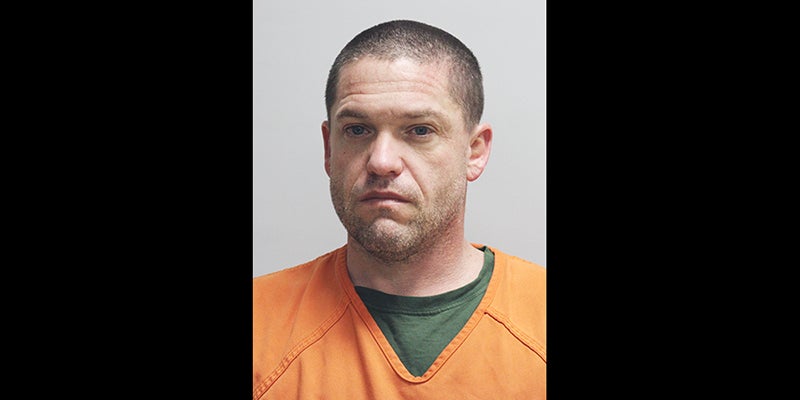Special Report: Race doesn’t tell whole story when it comes to the town’s crime rate
Published 10:40 am Tuesday, October 1, 2013

Police tape blocks off a section of Fourth Street NW where a possible homicide took place in February. — Herald file photo
Part Two in a two-part series
Crime in Austin may not have increased over the past 20 years, but there are still plenty of offenders in Austin committing crimes. Total arrests have fallen in the last several years, but law enforcement officials say they are seeing more serious crimes. There are many theories for why this is happening, but local officials say it’s difficult to predict who will commit crimes.
According to the Department of Public Safety, Austin has a variety of criminals of different ages who come from all kinds of backgrounds.
Different names
One popular theory for Austin’s high crime rate is its diversity. Since the late 1990s, many refugees and immigrants have settled in Austin to predominantly work at local meatpacking plants. The new cultures have sparked racial tensions over the years, and residents watched as several high-profile court cases, including a double homicide at the former Downtown Motel in 2000, garnered much media attention.
Though Austin’s residents of color account for a smaller amount of total arrests than its white residents, the city’s black population accounts for a proportionally larger amount of arrests than any other racial group, according to a 2012 report by the Department of Public Safety. In terms of ethnicity, Hispanics account for a proportionally smaller number of arrests.
“I don’t think it’s the racial makeup at all,” said Mayor Tom Stiehm, who worked for the Austin Police Department for about 30 years. “We had this before we had the diversity in town.”
About 990 black residents lived in Austin in 2010, according to the 2010 U.S. Census. That means about 4 percent of Austin’s population accounted for about 18 percent of the arrests. About 3,800 Hispanic residents lived in Austin at the same time, or about 15 percent of Austin’s population. Hispanics accounted for about 11 percent of last year’s arrests. And whites accounted for 79 percent of arrests in Austin in 2012, compared to Austin’s 91 percent white population.
Still, in terms of totals, Austin police arrested more white offenders than any other race last year. Police arrested white offenders 1,387 times out of 1,751 total arrests last year, compared to 325 arrests of black offenders. There were 206 arrests of Hispanic offenders in 2012 compared to 1,534 arrests of non-Hispanic residents. Still, those numbers don’t reflect how many people were arrested, as police may arrest one person multiple times.
‘This is happening?’
There’s no easy answer for why police arrest more black people proportional to the black population, but some residents believe police tend to stop black Austinites more than other races.
Santino Deng had his own run-in with police about a year and a half ago. The well-known volunteer and Sudanese community leader said he was walking downtown, trying to find a bail bonds office to help post bail for a community member he knew, when police stopped him and asked for his ID.
Deng asked the officer, who he was acquainted with, why he needed to show ID, but he said the officer wouldn’t give him a reason.
“This was the first time to hear something like that,” he said.
Deng at first refused to show his ID because he didn’t understand why the officer was stopping him, but he eventually removed his ID after he realized the officer became agitated and approached Deng with his hand on his gun.
“In my mind, I was saying to myself, ‘Don’t do that, just let it go, listen to the officer,’” Deng said. “But then another part of me said, ‘In Austin? This is happening?’”
The officer later told him police had a report of someone committing a crime in the area and had fled the scene, but didn’t have a good description of the suspect.
“I told him, ‘This is prejudice, you need to know that,’” Deng said. “You cannot just stop any black person because you are looking for someone who ran away from here.”
Deng later met with Police Chief Brian Krueger and other law enforcement officials over the incident.
To Deng, last year’s statistics are to be expected as Austin grows and receives more residents. He has heard from frustrated Sudanese that police repeatedly stop them for little to no reason. Deng has seen several families move out of the area because police continuously stopped them at night after family members finished shifts at local meatpacking plants.
“We tell them to just be patient because police are doing their jobs,” Deng said.
Krueger has heard complaints over officers before, but he said more often than not families are told only one side of the story. He said police are often responding to complaints in the neighborhood or are looking for certain patterns of behavior in drivers. While families and residents may get an offender’s side of the story, they often haven’t heard details of a person’s crime from the police, or from a police report.
“Once they get the whole story, there seems to be a lot of understanding as far as why a stop or arrest took place,” he said.
Austin police are given cultural sensitivity training when going over defensive tactics, according to Krueger, as it’s important to know how to interact with someone who isn’t familiar with the legal system. Krueger said cultural training is something supervisors go over with officers on a regular basis.
“Our job is to make sure the entire population is served with the best public safety possible,” Krueger said. “Our officers are out doing the very best job they can.”
Deng said he and other Sudanese residents have cautioned others to follow the law and social ordinances.

Police gather around a vehicle of a man who they chased behind Marcusen Park in 2012. — Herald file photo
More Sudanese, other African refugees, and black residents have moved into the area over the past few years. Refugees of other backgrounds are also coming to Austin, looking for work at the plants. With an increase in population, Deng expects the amount of arrests in Austin to grow.
“This is what happens when Austin changes and grows,” he said.
Yet the perception that people of color are committing crimes hasn’t been easy for some residents to cope with.
“We used to sell the paper,” said Miguel Garate, local community organizer. “People loved to see [crime stories involving Hispanics.] That really hurts when people think we’re here to hurt, we’re here to damage.”
Garate occasionally acts as interpreter for Hispanic residents at the Mower County Jail and Justice Center who are looking to pay a fine or take care of other small requirements. When he goes to the second floor of the courthouse, he checks the monitors to see who is in court that day.
“There’s not too many Latino names on those screens,” he said.
Deng believes more representation at the Law Enforcement Center, along with better communication between area police and residents, would help reduce cultural barriers and may help some residents steer clear of trouble. Krueger said the police department works on ways to educate the public about interacting with the police, which includes school seminars given by school resource officers.
The young and the arrested
Juvenile crime has varied in Austin over the years. Police on average arrested more juveniles in the late 1990s and early 2000s than the past several years, according to Department of Public Safety reports, and serious crimes committed by juveniles have fallen, as well.
Police made 758 juvenile arrests in 1996 and 1997, the highest number over a 20-year period. In addition, 147 juvenile arrests were for serious crimes in 1996, with another 139 in 1997. In the past five years, the highest number of juvenile arrests — 532 — took place in 2011. Of those, 84 arrests were for serious crimes. Last year, police made 385 juvenile arrests, with 89 of those for serious crimes.
Mower County Sheriff Terese Amazi said bad parenting may be a significant factor for why juveniles get arrested, but issues like poverty and chemical dependency can also contribute to the juvenile crime rate. According to the 2010 Minnesota Student Survey, about 52 percent of Mower County high school seniors tried alcohol at some point, and more than 40 percent of them had tried marijuana. In addition, about 14 percent of Mower County male students had tried other drugs by the time they were high school seniors, while 13 percent of female students were doing the same.
Krueger is glad juvenile crime has subsided over the years, but he has noticed a recent uptick in crime among adolescents. He attributes much of the police department’s success in preventing juvenile crime to the school resource officers at Austin Public Schools.
“Their presence in the school definitely keeps things in perspective for students for the most part,” Krueger said. “Once school gets out, teenagers sometimes don’t think what their actions will result in.”
—Matt Peterson contributed to this story.







